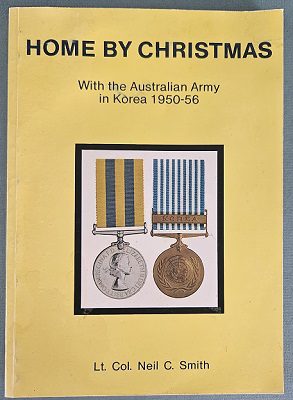Description
Title: Mates, Mortars and Minefields Korea
Author: Holder, Ernie R
Condition: Near Mint
Edition: 1st Edition
Publication Date: 2006
ISBN: 1876439629
Cover: Hard Cover without Dust Jacket – 264 pages
Comments: A detailed account of the author’s service with the 2nd Battalion (The Royal Australian Regiment) (2RAR) during the Korean War in 1953.
The battalion trained for Korea at Puckapunyal. It embarked for Korea on 5 March 1953 on board MV New Australia, arriving in Korea on 17 March. It joined the Commonwealth Division on 21 March, replacing 1RAR at Camp Casey near Tongduchon, South Korea.
2RAR was primarily deployed in patrolling the no man’s land to the north of the UN lines. This involved making small advances, defending its position, capturing prisoners, collecting intelligence, and maintaining minefields and trenches. The work was monotonous and dangerous, with many casualties caused by mines.
The conditions of this phase of the war, often referred to as the “static phase”, created an additional burden. In winter it was not uncommon for top temperatures to be below zero, and troops had to take precautions against frost-bite and trench foot. At the other extreme, summer was humid, with heavy rain that often flooded the trenches. Added to this were possible attacks from the enemy coupled with shell and mortar fire.
2RAR patrolled sections of the Jamestown line, in the area of the Imjin and Samichon Rivers. On 9-10 July 1953, 2RAR with 3RAR were given the task of holding the line to the west of the Samichon River. 2RAR was stationed on the left forward position of a hill that was commonly referred to as the “Hook”.
On the night of 24 July 1953, the Chinese forces attacked 2RAR and a US Marine Regiment. The attack was launched in consecutive waves over the nights of both 24 and 25 July, with heavy artillery and mortar attacks during the day. 2RAR held firm against the assaults, and on the morning of the 26 July, the Chinese abandoned the attack. About 3,000 Chinese dead lay in front of the Hook. 2RAR had lost five killed and 24 wounded. The armistice came into effect at 10 pm the following evening.
After the armistice, 2RAR was involved in training and border patrols. It was replaced by 1RAR in April 1954 and returned to Australia.






